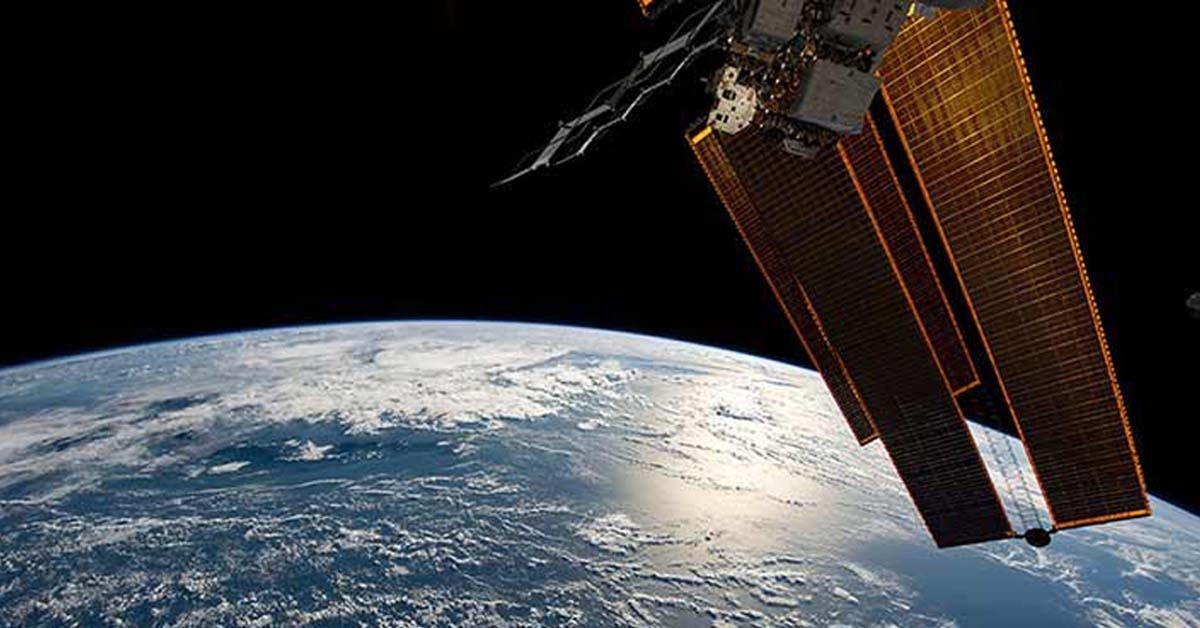Lab tests on astronaut Scott Kelly’s blood cells after he returned from a year-long stay aboard the International Space Station (ISS) showed telomeric and pre-leukemic changes. These cellular alterations had previously been seen in blood, but only after many years of human aging.
 Stem cell research will be conducted in a laboratory bay located aboard the International Space Station, pictured here, in low-Earth orbit. Image Credit: NASA
Stem cell research will be conducted in a laboratory bay located aboard the International Space Station, pictured here, in low-Earth orbit. Image Credit: NASA
There is growing evidence that human stem cells, including those that develop into blood cells, can age more quickly and simulate aging in space due to the absence of gravity. But knowing this process can help prevent the effects of aging on Earth as well, so it is not just helpful for keeping astronauts healthy.
The first launch of hematopoietic (blood stem) cells into space will be piloted by the UC San Diego Sanford Stem Cell Institute on November 22nd, 2022.
The Integrated Space Stem Cell Orbital Research (ISSCOR) Center at UC San Diego, which was founded with funding from the JM Foundation and the National Aeronautics and Space Administration (NASA), has now launched stem cells onto the ISS three times.
ISSCOR is teaching us a lot about how space and aging may affect stem cell biology, but if we can’t reproduce the results, we don’t have a scientific advance. This is our third trip sending stem cells into space, so we’re hoping it is a hat trick.”
Catriona Jamieson, MD, PhD, Director, Sanford Stem Cell Institute
Jamieson is also the Koman Family Presidential Endowed Chair in Cancer Research at UC San Diego School of Medicine.
Jessica Pham, manager of the ISSCOR Center, stated: “Our mission for this launch is to add rigor and reproducibility to these experiments—we are using gravity to produce gravitas.”
Jamieson and colleagues’ research has demonstrated that stem cells age differently in various individuals, but researchers are still trying to determine how much of this is due to hardwired genetic influences or the distinct microenvironment of every person’s body.
For instance, research indicates that an inflammatory environment in the bone marrow can stress blood stem cells and cause DNA damage, which may eventually result in pre-leukemic blood disorders.
Jamieson added, “It is increasingly clear that the way stem cells age depends on what they are exposed to, and the more we understand this process, the more precisely we can intercept cancer development and turn back the clock on human aging.”
The Sanford Stem Cell Institute’s researchers will use space as a kind of “aging accelerator,” first verifying that the microgravity environment faithfully simulates human aging, and then using that to learn more about the aging process.
Without having to rely on time-consuming and expensive clinical trials monitoring Earthbound humans as they age, the study will help scientists and clinicians better understand stem cell aging.
With the controlled environment and quick pace of space, the experiments are just the beginning of a burgeoning scientific enterprise that could advance numerous fields of health sciences research. Future launches will examine the biology of aging in different tissue types, such as the liver and brain, and test additional aspects of stem cell biology.
The launch represents a significant first step for the new institute, which was founded in September 2022, thanks to a $150 million gift from investor and philanthropist T. Denny Sanford.
The bold and generous investment by T. Denny Sanford was only announced two months ago and we are already breaking new ground on ways to develop and deliver the therapeutic promise of human stem cells. This collaboration between NASA and our Sanford Stem Cell Institute does what UC San Diego’s collaborative and groundbreaking community does best—working to address a variety of problems with novel, and in this case, literally out-of-this-world tactics.”
Corinne Peek-Asa, PhD, Vice Chancellor and Research, University of California San Diego
Source:
Journal reference:
Garrett-Bakelman, F. E., et al. (2022). The NASA Twins Study: A multidimensional analysis of a year-long human spaceflight. Science. doi.org/10.1126/science.aau8650